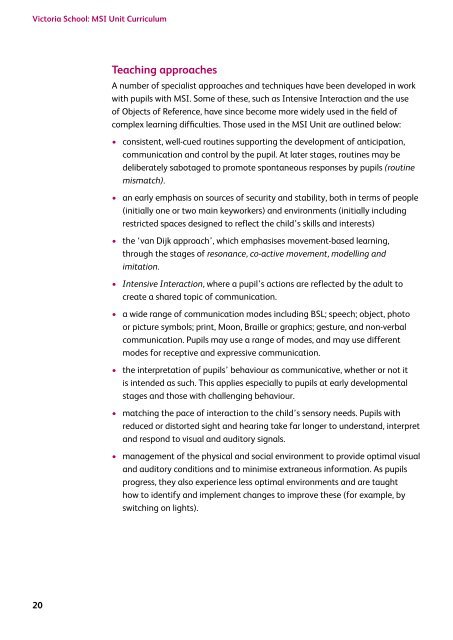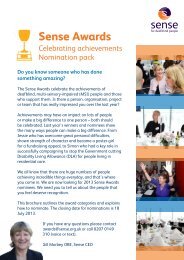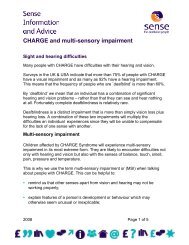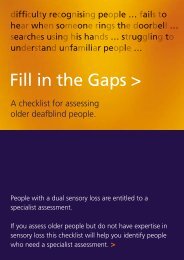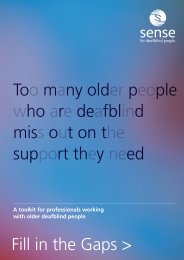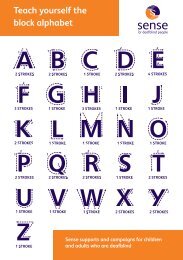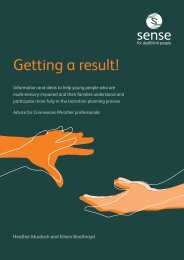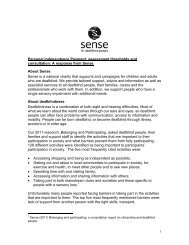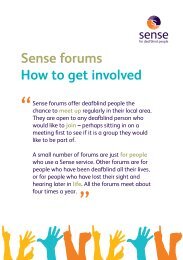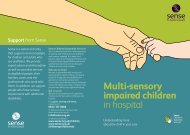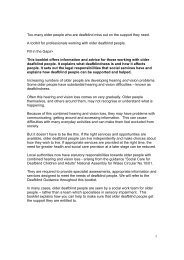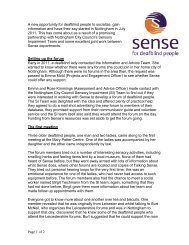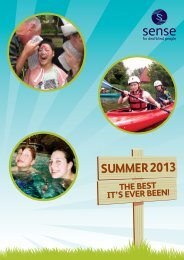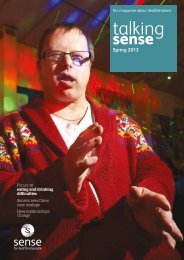MSI Unit Curriculum - Sense
MSI Unit Curriculum - Sense
MSI Unit Curriculum - Sense
You also want an ePaper? Increase the reach of your titles
YUMPU automatically turns print PDFs into web optimized ePapers that Google loves.
Victoria School: <strong>MSI</strong> <strong>Unit</strong> <strong>Curriculum</strong>Teaching approachesA number of specialist approaches and techniques have been developed in workwith pupils with <strong>MSI</strong>. Some of these, such as Intensive Interaction and the useof Objects of Reference, have since become more widely used in the field ofcomplex learning difficulties. Those used in the <strong>MSI</strong> <strong>Unit</strong> are outlined below:• consistent, well-cued routines supporting the development of anticipation,communication and control by the pupil. At later stages, routines may bedeliberately sabotaged to promote spontaneous responses by pupils (routinemismatch).• an early emphasis on sources of security and stability, both in terms of people(initially one or two main keyworkers) and environments (initially includingrestricted spaces designed to reflect the child’s skills and interests)• the ‘van Dijk approach’, which emphasises movement-based learning,through the stages of resonance, co-active movement, modelling andimitation.• Intensive Interaction, where a pupil’s actions are reflected by the adult tocreate a shared topic of communication.• a wide range of communication modes including BSL; speech; object, photoor picture symbols; print, Moon, Braille or graphics; gesture, and non-verbalcommunication. Pupils may use a range of modes, and may use differentmodes for receptive and expressive communication.• the interpretation of pupils’ behaviour as communicative, whether or not itis intended as such. This applies especially to pupils at early developmentalstages and those with challenging behaviour.• matching the pace of interaction to the child’s sensory needs. Pupils withreduced or distorted sight and hearing take far longer to understand, interpretand respond to visual and auditory signals.• management of the physical and social environment to provide optimal visualand auditory conditions and to minimise extraneous information. As pupilsprogress, they also experience less optimal environments and are taughthow to identify and implement changes to improve these (for example, byswitching on lights).20


